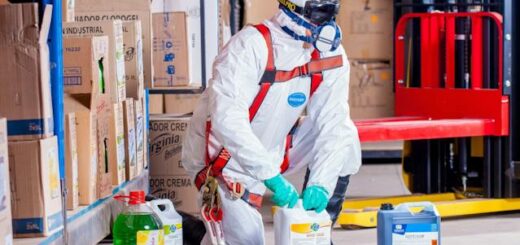OSHA Construction Standards: Ensuring Safety
Safety is paramount in any sort of work. Every year, thousands of workers face occupational hazards that can result in injuries or even fatalities. To mitigate these risks, the Occupational Safety and Health Administration (OSHA) has established comprehensive construction standards. In this article, we will delve into the world of OSHA construction standards, exploring their significance, key components, and how they contribute to safeguarding construction workers’ lives.
What is OSHA’s Role
The Occupational Safety and Health Administration, commonly known as OSHA, is a federal agency in the United States dedicated to ensuring safe and healthful working conditions for employees.
OSHA plays a pivotal role in various industries, with a particular focus on the construction sector. Their primary mission is to prevent workplace injuries, illnesses, and fatalities.
Construction sites are inherently risky environments. Heavy machinery, elevated workspaces, and exposure to various materials pose potential dangers to workers. Recognizing these risks, OSHA has formulated stringent construction standards to protect the workforce.
OSHA Construction Standards Overview
Different Categories of OSHA Standards
OSHA construction standards cover a wide array of topics, ranging from fall protection and electrical safety to hazard communication and personal protective equipment (PPE). These standards are categorized to address specific hazards and safety measures.
OSHA standards have evolved over the years to adapt to changing technologies and work practices. The agency continually revises and updates standards to reflect current industry best practices and emerging hazards.
Key Components of OSHA Construction Standards
Hazard Communication
One of the fundamental aspects of OSHA construction standards is hazard communication.
This includes labeling hazardous materials, providing safety data sheets, and ensuring that workers understand the risks associated with the chemicals they handle.
Fall Protection
Falls are a leading cause of injuries and fatalities in construction. OSHA mandates fall protection measures such as guardrails, safety nets, and personal fall arrest systems to prevent such accidents.
Electrical Safety
Electrocution hazards are prevalent on construction sites. OSHA standards detail safe practices for working with electricity, including proper grounding, wiring, and lockout/tagout procedures.
Scaffolding and Ladder Safety
Proper scaffolding and ladder use are critical to prevent falls and injuries. OSHA sets guidelines for the design, construction, and use of scaffolds and ladders to ensure worker safety.
The Impact of OSHA Standards
Reducing Workplace Accidents
The implementation of OSHA standards has led to a significant reduction in workplace accidents. Safety measures such as training, PPE use, and equipment inspections contribute to safer construction sites.
Lowering Injury Rates
By adhering to OSHA standards, construction companies have witnessed a decline in injury rates. This not only benefits workers but also reduces the financial burden of medical expenses and compensation claims.
Saving Lives
Perhaps the most vital aspect of OSHA standards is their role in saving lives. Workers return home safely to their families due to the rigorous safety measures mandated by OSHA.
A culture of safety begins with leadership and is embraced by every member of a construction team. Employers must lead by example, prioritize safety, and empower their employees to voice safety concerns. Employees, on the other hand, should actively participate in safety programs and initiatives, taking personal responsibility for their well-being and that of their colleagues.
While this article primarily focuses on OSHA standards in the United States, it’s enlightening to explore how other countries tackle construction safety. Different nations employ varying strategies and regulations, offering valuable lessons and insights.
By examining international perspectives, we can identify innovative safety measures and practices that can be adapted or integrated into existing OSHA standards.
The construction industry is continually evolving, and so are safety standards. We’ll explore some of the emerging technologies and regulations that are likely to shape the future of OSHA compliance.
Construction professionals and companies need to be proactive in preparing for the next generation of safety standards. Adapting to new regulations and technologies will be key to maintaining a safe working environment.
In conclusion, OSHA construction standards are the cornerstone of safety in the construction industry. They play a vital role in preventing accidents, reducing injuries, and saving lives. The commitment to OSHA compliance, from hazard communication to fall protection and beyond, ensures that construction workers can perform their tasks with confidence in their safety.
By fostering a culture of safety, staying informed about evolving regulations, and embracing technological advancements, the construction industry can continue to improve safety standards and protect its workforce.
Remember, safety is a shared responsibility, and it starts with each one of us—employers, employees, and all stakeholders in the construction industry.
FAQs
FAQ 1: What Is OSHA’s Primary Goal in Construction Safety?
OSHA’s primary goal in construction safety is to ensure that workers are provided with a safe and healthful working environment. This includes identifying and mitigating workplace hazards, providing training and education, and enforcing safety regulations to prevent accidents and injuries.
FAQ 2: How Often Should Safety Training be Conducted According to OSHA?
OSHA recommends that safety training be conducted regularly and as needed. Training should be provided to new employees, when new hazards are introduced, and whenever there is a change in job roles or responsibilities that affect safety. Ongoing refresher training is also essential to keep workers informed and updated on safety practices.
FAQ 3: Are Small Construction Companies Subject to the Same OSHA Standards?
Yes, OSHA standards apply to all construction companies, regardless of their size. Small construction companies are expected to comply with the same safety regulations as larger ones. OSHA provides resources and guidance to help small businesses meet compliance requirements while considering their unique challenges and needs.
FAQ 4: Can OSHA Standards Adapt to New Technologies and Techniques?
Absolutely. OSHA is committed to staying current with technological advancements and industry best practices. The agency regularly reviews and updates its standards to incorporate new technologies and safety techniques that enhance workplace safety. This adaptability ensures that OSHA standards remain relevant in a changing construction landscape.
FAQ 5: Where Can I Access OSHA Guidelines and Resources?
You can access OSHA guidelines, resources, and standards on the official OSHA website (www.osha.gov). The website provides a wealth of information, including safety regulations, training materials, publications, and tools to help employers and employees understand and comply with OSHA standards. Additionally, OSHA regional offices and partnerships with industry organizations offer support and assistance in promoting workplace safety.




